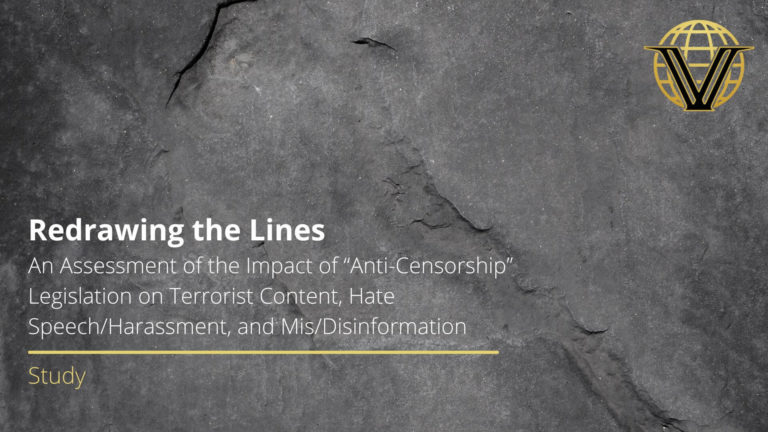Daveed Gartenstein-Ross, Logan Macnair, and Vivian Hagerty
During the Islamic State’s (ISIL) brief but bloody rule as a self-described caliphate, it boasted of keeping Yazidi women as sex slaves. Female Yazidis were subjected to forced conversions, while Sunni women in areas under ISIL’s control were subjected to the militant group’s draconian restrictions. After interviewing female Sunnis who fled ISIL’s misrule, Human Rights Watch reported, “all of the Sunni women and girls reported severe restrictions on their clothing and freedom of movement,” and were further “only allowed to leave their houses dressed in full face veil (niqab) and accompanied by a close male relative.” Even women who joined the organization and lived voluntarily in ISIL-held territory were required to adhere to strict and repressive rules about a woman’s role in society. Yet as the caliphate collapsed, women appeared to start playing a greater part in ISIL’s military operations than the group had previously allowed. The role played by the women of ISIL may continue to grow.
This article seeks to contextualize ISIL’s increasing use of women in kinetic activities — such as suicide attacks — and show the main ways in which this shift could pose a greater threat to Western countries. The group may start selecting more women as operatives in external operations plots; returning female “emigrants” may radicalize or recruit others; and women may take on “virtual planner” responsibilities. We argue that governments should be wary of succumbing to a “positive security bias,” that is, applying far less scrutiny to women than they do to men under the assumption that women are less threatening. The signs that women are now playing a greater role in ISIL are plain to see in the group’s propaganda, and are being increasingly recognized in media reports. We ignore these signs at our own peril.
Historical Context
Women have long held both leadership and combat positions in terrorist organizations, from the anarchist movements starting in the late 1800s to the anticolonial independence movements of the mid-20th century to the left-wing and ethno-nationalist terrorist groups of the 1960s through 1980s.
Jihadist organizations, which espouse conservative gender roles (both societally and within their groups), often relegate women to support roles. But the leaders of these groups have frequently reversed course and allowed women to participate in terrorist acts, often in the role of suicide bomber. The first reports of female suicide bombers emerged in the 1980s in places like Lebanon, Turkey, and Sri Lanka. These women were not affiliated with Sunni jihadist organizations, but rather with a diversity of extremist groups of varying nationalist, political, and religious outlooks. In the early 2000s, some Islamist organizations began employing female suicide bombers to evade security measures. Palestinian Islamic Jihad (PIJ) used a 19-year-old female operative to kill 3 people in a mall in 2003. Similarly, while Hamas originally refused to allow women to serve as operatives, the organization reversed its decision around the same time that PIJ started using female attackers. In 2002, Hamas leader Ahmed Yassin was vehement about not allowing women to perpetrate suicide bombings. But just two years later, in 2004, Hamas deployed its first female suicide bomber.
A year later, in September 2005, al-Qaeda in Iraq — ISIL’s parent organization — followed suit. The same year, a Belgian woman named Muriel Degauque became the first European female suicide bomber when she attacked a U.S. military convoy near Baghdad. In the following years, al-Qaeda in Iraq steadily increased its use of female suicide bombers. Similarly, since 2014 Boko Haram has reportedly utilized more female suicide bombers than any other terrorist organization. Indeed, while Boko Haram only began using women for this purpose in recent years, they reportedly already comprise the majority of suicide bombers that the organization has used throughout its history. Female suicide bombers have also frequently struck in the Caucasus, and two female combatants reportedly participated in the notorious Beslan school massacre in September 2004.
When ISIL declared its caliphate in 2014, the organization formed two female battalions known as Al-Khansaa and Umm al-Rayan. Rather than engaging in combat, the women in these brigades were used as hisba forces, charged with ensuring that other women followed ISIL’s version of sharia (Islamic law). A 2015 manifesto by one of the female battalions embraced ISIL’s ultraconservative view of gender, asserting that women were only permitted to leave their homes and fight under very specific circumstances. But more recently, ISIL may have opened the door to more direct female battlefield involvement.
Early Female Participation in ISIL
While the role of women appears to have increased recently, ISIL has always had a significant female presence. Though most foreign fighters and emigrants who traveled from abroad to ISIL’s caliphate have been male, the number of female recruits is substantial. A recent study indicates 11 percent of American foreign fighters and emigrants to ISIL’s territory are women. According to French law enforcement, around 43 percent of the 690 French emigrants remaining in Syria are women. While France has produced the largest number of European female ISIL recruits, other European countries have also reported significant figures. Open-source accounts suggest that more than 500 women total have left Western Europe to join ISIL since 2013.
One well-known case is Emilie König of France, who in 2012 became one of the first known European women to emigrate to Syria. König, who worked as a server in France, had converted to Islam as a teenager. After several years of troublesome behavior, including distribution of jihadist propaganda at her local mosque, König decided to emigrate. In Syria, she worked actively as a recruiter, spending much of her time online trying to persuade other women to join ISIL. Kurdish forces recently captured König in Syria, and she has pleaded with the French government to allow her to return.
In 2013, Scottish teenager Aqsa Mahmood dropped out of university and emigrated to Syria, where she was quickly married. She began working as an online recruiter, providing tips and “how-to” guides to other European women who were considering emigrating. Also in 2013, British national Sally Jones emigrated to ISIL-held territory, taking her young child with her. While in the caliphate, Jones married fellow British emigrant Junaid Hussain. Jones worked as an active propagandist until her death in 2017. A woman from Alabama, Huda Muthawny, was also reportedly responsible for recruiting American women to travel to the caliphate.
As these examples illustrate, while there may be archetypes that help us understand the kind of women who are drawn to ISIL, there is no single profile of the female recruit. Women who decide to emigrate come from a range of backgrounds and exhibit various motivations. According to unpublished data that George Washington University’s Program on Extremism provided to us, the average age of American women who attempted to travel to Iraq and Syria is 23, with a range from 15 to 38. Their demographics, the Program on Extremism told us, “are remarkably diverse, hailing from a wide array of ethnic and national backgrounds.” In contrast, there are more female European recruits, and they are often substantially older than the female American emigrants.
Some female emigrants are motivated by their desire to marry jihadist fighters, who are portrayed in ISIL’s propaganda in a romanticized, honorable, and attractive light. But it is not clear that this is the motivation for most women who join, and numerous other reasons can be easily discerned. König reportedly made the decision to emigrate on her own, without the pressure or lure of a husband or boyfriend. Indeed, in some cases women pressure their husbands to emigrate with them. Many women join ISIL for the same reasons as men do: out of a feeling of religious obligation, as revenge for perceived wrongdoings against the global Muslim population, as a means of finding existential or spiritual meaning, or to advance ISIL’s state-building project.
Once they made it to ISIL-held territory, female emigrants took on several roles. Most female emigrants found themselves in traditional and limited roles, with the expectation they would remain at home supporting jihadist husbands and raising children. This emphasis on a familial role for women was, in part, intended to ensure ISIL’s survival through future generations that the women would raise and indoctrinate. Other women, however, took on the additional responsibility of recruiting more women online. König, Mahmood, Jones, and Muthawny all worked as propagandists and recruiters, where they were well placed to answer questions from potential female emigrants. It is easiest for researchers to study female ISIL members with prominent public profiles, so the four women highlighted in this article should not cause us to overestimate the active roles that women played in ISIL. In particular, their absence from the battlefield during ISIL’s glory days was conspicuous.
Women, Militant Operations, and ISIL Propaganda
Though ISIL maintained its ban on female fighters during its early years, this policy seems to have been softened over the past year. There is an important debate about how significant a shift has occurred, with Charlie Winter and Devorah Margolin representing one pole of the debate, while Simon Cottee and Mia Bloom represent another. While this discussion is quite worthy of the reader’s exploration, what is not in question is that ISIL has begun to feature women in combat operations in its propaganda. For instance, the October 2017 issue of ISIL’s newsletter al-Naba endorses women in combat operations and military roles under certain conditions.
Subsequently, a recent ISIL video, released in February 2018, for the first time promoted footage of what appears to be women on the front lines fighting alongside male combatants, praising them for their contributions. As Kiroloi Ingram has shown, some analysts are debating whether the burka-clad figures may in fact be men disguised as women. But Ingram correctly argues that ISIL’s propaganda claiming female combatants is significant regardless of on-the-ground realities. The February video’s English-speaking narrator explains that any female combatant is “a chaste mujahid woman journeying to her Lord with the garments of purity and faith, seeking revenge for her religion and for the honor of her sisters imprisoned by the apostate Kurds.”
There are questions about whether ISIL deployed female suicide bombers in the Battle of Mosul. Toward the end of this fight, as it became clear ISIL was losing control of the city, an Iraqi security official told The Times of London that dozens of female suicide bombers were deployed in a last-ditch effort. Cottee and Bloom caution that while reports of female ISIL suicide bombers striking in Mosul “may well turn out to be true … it would be unwise to take them at face value.” Most significant to Cottee and Bloom is the fact that “nowhere on its social media, encrypted platforms or internal discussions has ISIS acknowledged the use of female suicide bombers.” But Elizabeth Pearson is correct that if the reports are true — and she does not assume that they are — it would represent a “turning point” for ISIL.
Thus, while there is significant debate about the extent, it seems ISIL has softened its initial decision to prohibit women in combat roles — and has certainly loosened this constraint in its public messaging. The reasons for this are likely rooted in practicality, as a way to address the group’s recent struggles with recruitment and territorial losses. ISIL’s reversal is likely to present new challenges for Western counterterrorism efforts, which will be compounded by the inconsistency of Western legal systems’ treatment of returnees — female returnees in particular.
In a number of European countries, traveling to ISIL’s territory is not a crime in itself, which means female returnees have often faced charges such as child endangerment rather than terrorism. Other European countries have indicated that women may be able to return home without fear of severe legal punishment. British authorities claimed in 2016 that, if there was no evidence to link them directly to violent activities, three British teenagers who left for ISIL’s caliphate in 2015 would be able to return with relatively few legal repercussions. The discrepancies in sentencing will allow some women to be released much earlier than those who committed similar crimes but hold different citizenship.
Future Threats from Jihadist Women
Increased female participation in jihadist activities may heighten ISIL’s threat in three ways. The first is external operations plotting. Terrorist organizations have historically used female operatives in cases when it would be difficult for men to infiltrate a target. Indeed, it was this consideration that often prompted them to use female operatives in the first place. For example, some security checkpoints in combat zones lack female security officials, which — due to traditional Muslim beliefs regarding gender relations — made it nearly impossible to effectively screen women passing through, making them more effective operatives.
Similarly, as male returnees are now facing scrutiny from Western security forces, ISIL may use what Florence Gaub and Julia Lisiecka term the “positive security bias” — the conscious or unconscious notion that women are inherently less threatening or capable of violence than men — to their advantage. ISIL could do this by encouraging would-be female attackers to play the role of a victim or naive traveler returning from a misadventure abroad. Gaub and Lisiecka explain this bias is a problem because “violent attacks by women conducted by other radical organisations are known to be more lethal, less likely to fail and garner more media coverage.” As female emigrants return to the West, ISIL’s external operations planners may instruct them to play to the positive security bias by tapping into the gendered assumption that women do not pose a real threat.
A second kind of threat is female returnees working to radicalize and recruit others in their home countries, serving as the connective tissue between the newly radicalized and established jihadists. These women may attempt to avoid Western security scrutiny by claiming to have repented or reformed, reinforcing the female victim narrative undergirding the positive security bias. As many female emigrants have recently expressed a desire to return home, Western security services should be aware of attempts to play to these biases.
A third threat is that women may be sought out by, or even become, virtual planners. As a War on the Rocks article outlined last year, the virtual planner model involves operatives connected to ISIL’s leadership assisting lone-actor or small-group attackers. Virtual planners harness digital connections and advanced encryption to perform the functions of supporting an attack that were once undertaken by physical networks. These planners have played intimate roles in the conceptualization, target selection, timing, and execution of attacks, and they can also provide direct technical assistance. Though virtual planners were in the past usually based in Iraq or Syria, they will almost certainly begin operating from a wider range of countries as ISIL’s emigrants disperse.
With coaching from virtual planners, women can carry out attacks in the West without having to travel to conflict zones. For instance, Rachid Kassim — who before his death was one of ISIL’s most prolific and successful virtual planners — directed a small cell of three French women to carry out an attack in Paris. Ines Madani, Sara Hervouet, and Amel Sakaou were arrested for their involvement in a plot to blow up the Notre Dame Cathedral in September 2016. Kassim was their connection to ISIL, and none of the women had known each other before the plot. The attack showed the capability of a skilled virtual planner to organize unconnected lone actors into a functioning cell.
In the future, both male and female virtual planners may seek to mimic Kassim’s efforts, directing operatives to conduct attacks in the West. Since female propagandists and recruiters have often had a knack for ingratiating themselves with other women, if women begin to act as virtual planners, it is more likely that the West will witness more female attackers.
Conclusion: The Dangerous Future of the Women of ISIL
Women’s involvement in ISIL’s recruitment efforts and, more recently, their increasing participation in militant operations complicate the threat that returning fighters and emigrants pose to the West. As ISIL continues to lose territory, and emigrants return home in greater numbers, Western security services must be wary about falling prey to the positive security bias. Returning female emigrants may play into misperceptions about women’s vulnerability or victimhood by claiming to have been naively lured to ISIL territory. But, once home, women who continue to adhere to the group’s ideology may remain in touch with their online networks, positioning them to serve as recruiters, attack planners, or even operatives.
To avoid being blindsided by women-organized plots and female attackers, the West must consider the unique ways in which returning women may seek to undermine security measures. Since many Western countries have yet to develop consistent legal and social procedures pertaining to the return of ISIL’s emigrants, the probability remains high that some individuals — especially women — will slip through the cracks. As a result, it is possible women will play a larger role in future ISIL-directed or ISIL-inspired operations. Whether their involvement is limited to recruitment, radicalization, facilitation, and communication roles, or includes more active engagement in attack planning, direction, and implementation, we are likely only beginning to see the extent to which women can further ISIL’s efforts after the caliphate has fallen. The positive security bias should not lead us to misjudge this threat.
Original article contains an image. To read the original article click here.
Daveed Gartenstein-Ross is a senior fellow at the Foundation for Defense of Democracies and the chief executive officer of the private firm Valens Global. Vivian Hagerty is the deputy research manager at Valens Global. Logan Macnair is a Ph.D. student at Simon Fraser University’s International CyberCrime Research Centre who specializes in extremist media.



